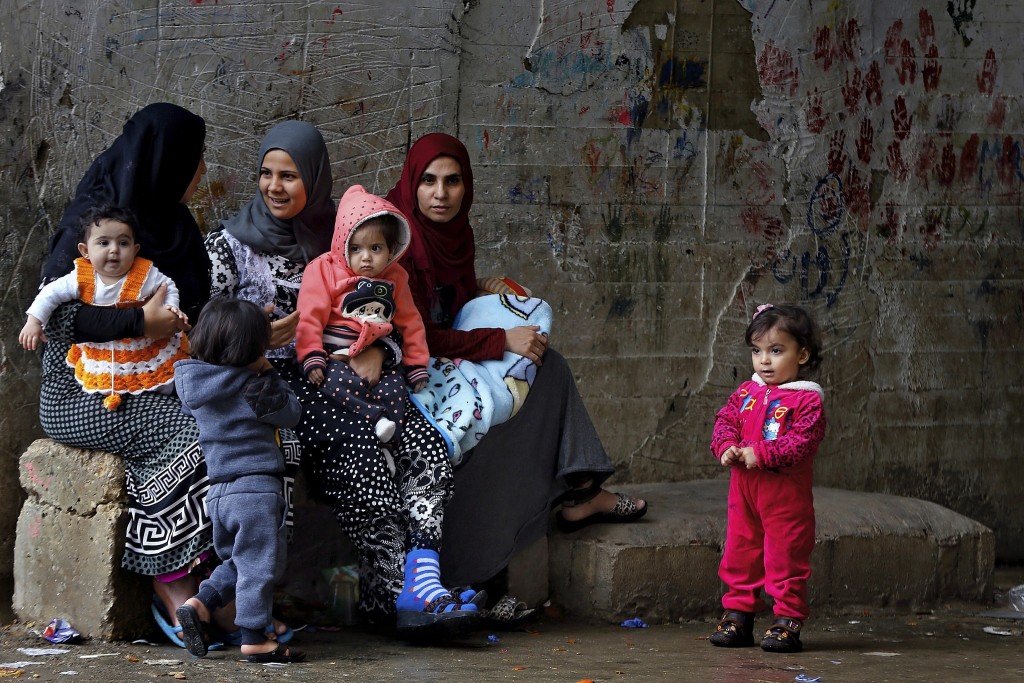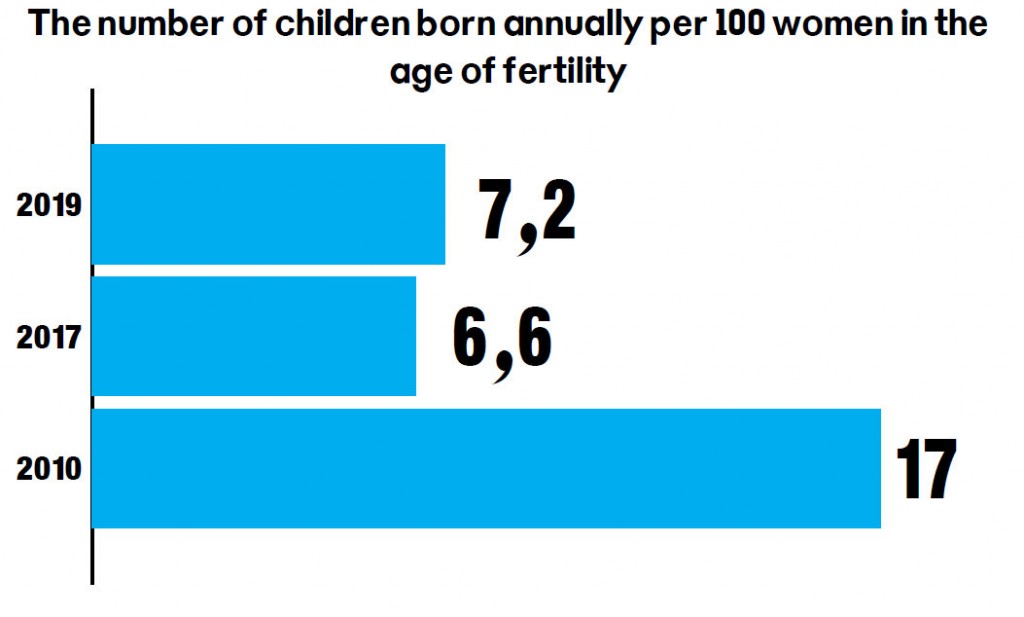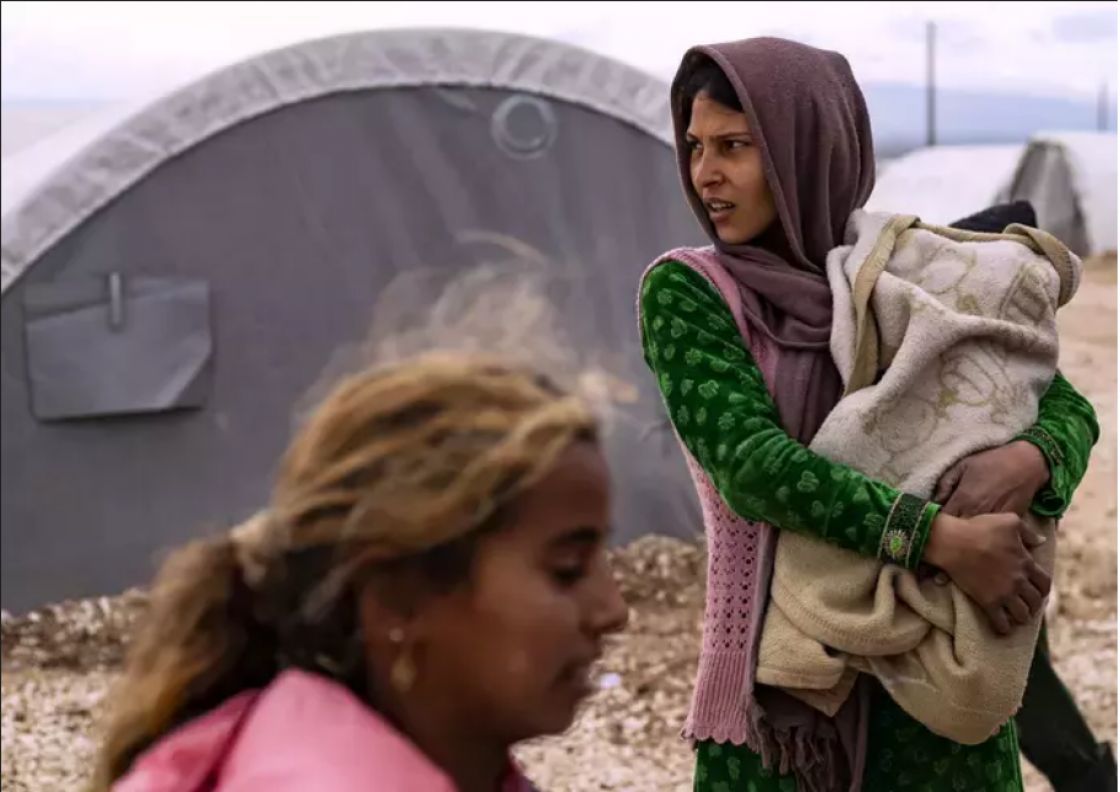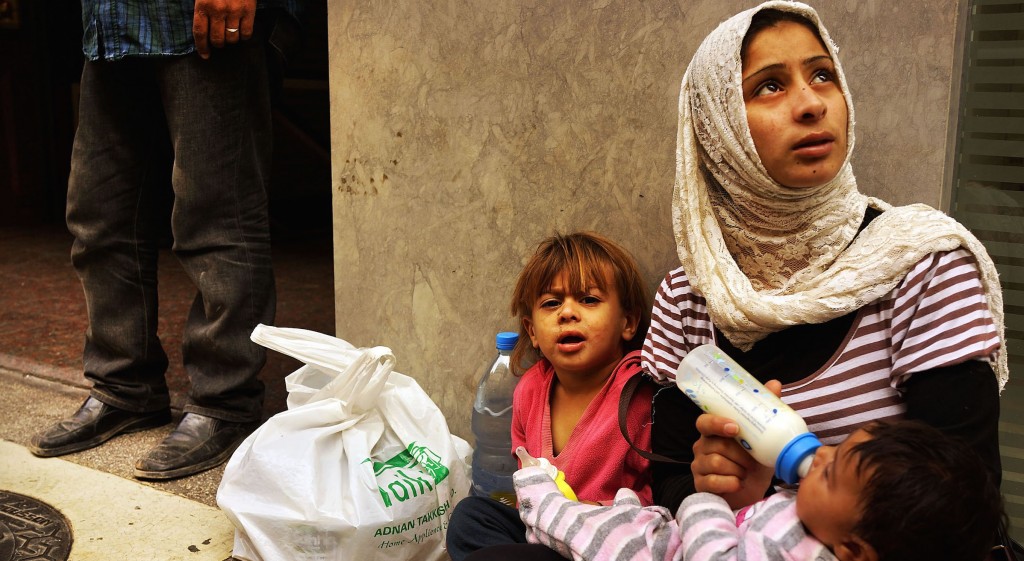- Articles
- Posted
Female Fertility Rates in Syria: A Slight Improvement; Long Wars and Future Losses.
It is usually said that major wars are followed by natural compensation for human losses, and that societies experience a mutation of population growth after war. This was what Europe and the United States have experienced after both World Wars, but great wars that break out and end then get followed by a successful and large reconstruction phase may allow for such compensation! However, continuous wars such as those in our region, which have not yet experienced a safe exit for decades, prevent even the natural compensation mechanisms, hence, generations continue to lose maternal and paternal rights and society loses its future.
Half of the population loss of the most affected countries from the Great War in the mid-20th century, such as: Russia and Germany, were males under the age of 30 years old. Nonetheless, the rate of population growth and the rate of fertility have increased during the 50s, and reached its peak in the 60s, then it declined again in the three abovementioned countries. This process coincided with the reconstruction phase and the golden decade of post-war economic growth. In less than two decades after the war, international circumstances and the nature of reconstruction have allowed compensation to be regained. However, this does not apply to the countries of our region and their continuous wars which are at a level that has prevented serious development for decades.
Lebanon, Iraq, and Afghanistan
Nearly 20 years of Lebanese civil war, and even 20 years after (reconstruction), the overall direction of the total fertility rate in Lebanon is still declining. Practically, between 1970 and 1990, Lebanese women lost 25% of total fertility rate, which is the decline in the number of births per woman in the age of fertility, between 15 - 49 as determined by international statistics; a rate that is calculated with measurements for the number of females at each age. In Iraq, the decline between 2000 and 2020 has also reached 22%; the country that has suffered from siege, then occupation, then the continuation of unrest and chaos, and finally the war with ISIS, has not been able in two decades to emerge from the effects of war in reducing women fertility, and the decline rapidly continues. Afghanistan has experienced the most severe rate between 2000 and 2020, as the country being under occupation and being mired in chaos until this day has lost 37% of its women fertility rate. The situation is the most severe in Afghanistan, as it’s the poorest and the least developed country, while throughout two generations in Iraq, the youth, born in the 80s, the 90s, during the siege, and who have grown up in the decades of war, have had their ability to get married and have children reduced, and female fertility rates have decreased rapidly. As for Lebanon, which has not yet emerged from war and has not actually had the opportunity to form a serious government until today, fertility rate in it continues to decline and it has been suffering since around 2005 from a fertility rate less than the replacement rate needed for the population, and the current generation in Lebanon has become fewer in number than the generation before war.
Syria; A Larger Decline and approaching towards Replacement Rate
In Syria, only 10 years have made us lose nearly 20% of the total fertility rate of Syrian women, in addition to the exceptional level of all disasters that affect stability: the emigration and death of young people, displacement and loss of homes, and the spread of poverty in an exceptional and rapid way. In 10 years, we have lost nearly what Iraq and Lebanon have lost in two decades of war and chaos, which adds new evidence to the indicators of the severity of the Syrian crisis. Syria is getting rapidly close to replacement fertility rate, i.e.: the rate at which society will not expand in a future generation, but will remain at its current limits, which is a human loss and a loss of growth and development opportunities for a society that has not been able to reap the fruits of its young powers. According to international estimates, the fertility rate 2.1 is the natural replacement rate of society from generation to generation, and today we have reached a total fertility rate of 2.8 according to the average estimates of the years between 2015 – 2020. If war and economic decline continue, or if we enter another long phase of declining development and expanding poverty, then the rate will decline further and we will reach a point where society is no longer capable of renewing itself demographically. It will not take 35 years to reach the loss of the absolute number of the next generation, as happened in Lebanon, as we may reach this outcome in less than two decades.

The Overall Fertility Rate is even more Frightening
This average calculation of the total fertility rate, which points out to a 20% decline within ten years, may not exactly reflect the severity of reality! If we took the total fertility rate which uses average numbers regardless of the distribution of women among age groups at the age of fertility, then the decline reaches more than 60%. We have previously indicated in the calculation of Kassioun, which was based on the population survey conducted by the Central Bureau of Statistics in 2017, that the total number of births relative to all women at the age of fertility has reached 6.6 children per 100 women, while this average ratio in 2010 was approximately 17 children per 100 women at the age of fertility! This number points out to the large number of women at their peak fertility who did not have the opportunity to have children with the significant sexual demographic change inside the country, whether due to the death or emigration of male youth or the overall economic decline. Practically, the number of women in Syria at the peak of fertility between the ages of 20 and 39 exceeds the number of males by 570,000! This gives one of the most important indicators of the number of young females deprived of the opportunity to be mothers. In addition, there are approximately 517,000 widowed women, and about 110 divorced or separated women.
The Rate improved in 2019, So will it Continue?
The annual data of the government census no longer publishes the fertility rate since 2010, but the general rate can be inferred from the annual birth data to give a rough indication. In the latest data for 2019 from the 2020 statistical group, it can be concluded overall that the general rate has increased, and for every 100 women at the age of fertility, the number of confirmed births has reached 7.2, an increase of 9% from the level of 2017. As for approximately every 4.25 million women at the age of fertility inside the country, the number of births born and registered in 2019 is close to 308,000, and these numbers do not include the governorates of Aleppo, Raqqa, Deir Ezzor and Idlib. This indicates some increase in the general index from the data of the civil registrations. The improvement between 2017 – 2019 is expected, as the years 2017 – 2018 experienced a decline in the cycle of violence and a relative stability in the level of prices. For example, the period between those two years is the only time in which there was no increase in the number of undernourished people inside Syria. In addition, this period experienced a huge decline in refugee movements to the neighboring countries, and a decline in illegal emigration from Syria, which peaked in 2015 – 2016. The question remains: will this improvement continue in the past year and this year? The factors of stability and reproduction today are at their lowest possible levels, and the increase in the severity and breadth of hunger will practically prevent the continuation of this temporary direction of the increase in fertility rate.

The decline in fertility rate makes countries such as Syria and Iraq, for example, lose one of their most important features which is the openness of the demographic window, that is: the high percentage of young people and the overall workforce compared to the number of economically dependent or unproductive population, which are those under the age of 15 and over the age of 65. We are passing through this period and losing its advantage as human power is drowning in the cycle of chaos and economic decline. Moreover, these young people are even losing their chance to secure the future where they should be supported (after several decades) as the number of young workforces will become less because the youth of today do not have the opportunity to regenerate the species as a compensation for the great population losses, which will require great developmental effort from the next generation. This challenge is faced by most of the Central Powers today, but with a fundamental difference: they are the (Central Powers)! That is, the largest mass of wealth, incomes and surpluses is historically concentrated there. Whereas this challenge will be very difficult for future generations in our region if the equations of the distribution of opportunities did not change globally. Our few children today will be responsible, in a generation, for supporting a larger number than what we support today, and the more we shorten the phase of chaos and destruction, the lighter and faster will the task of recovery be later.

The total fertility rate in Syria is approximately 2.8 on average between 2015-2020, and thus we are approaching the replacement rate estimated at 1.2, which means that with further fertility declines, we will reach a later generation that is fewer in number.
Practically with the decline in fertility, the average loss in the number of children within one year is approximately 400 thousand, as according to the previous rate, it was possible to conceive nearly 700 thousand, while 300 thousand were born.




